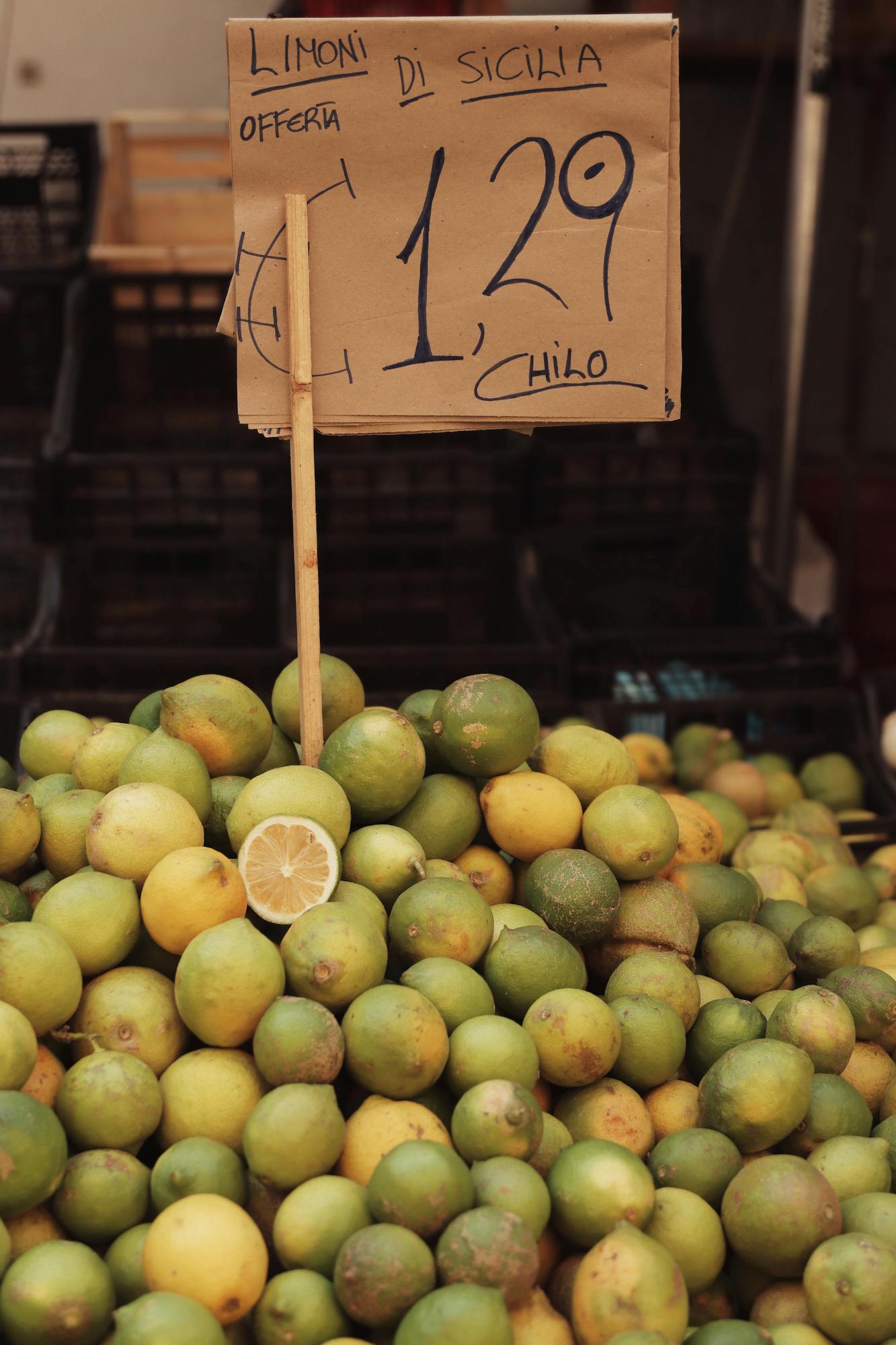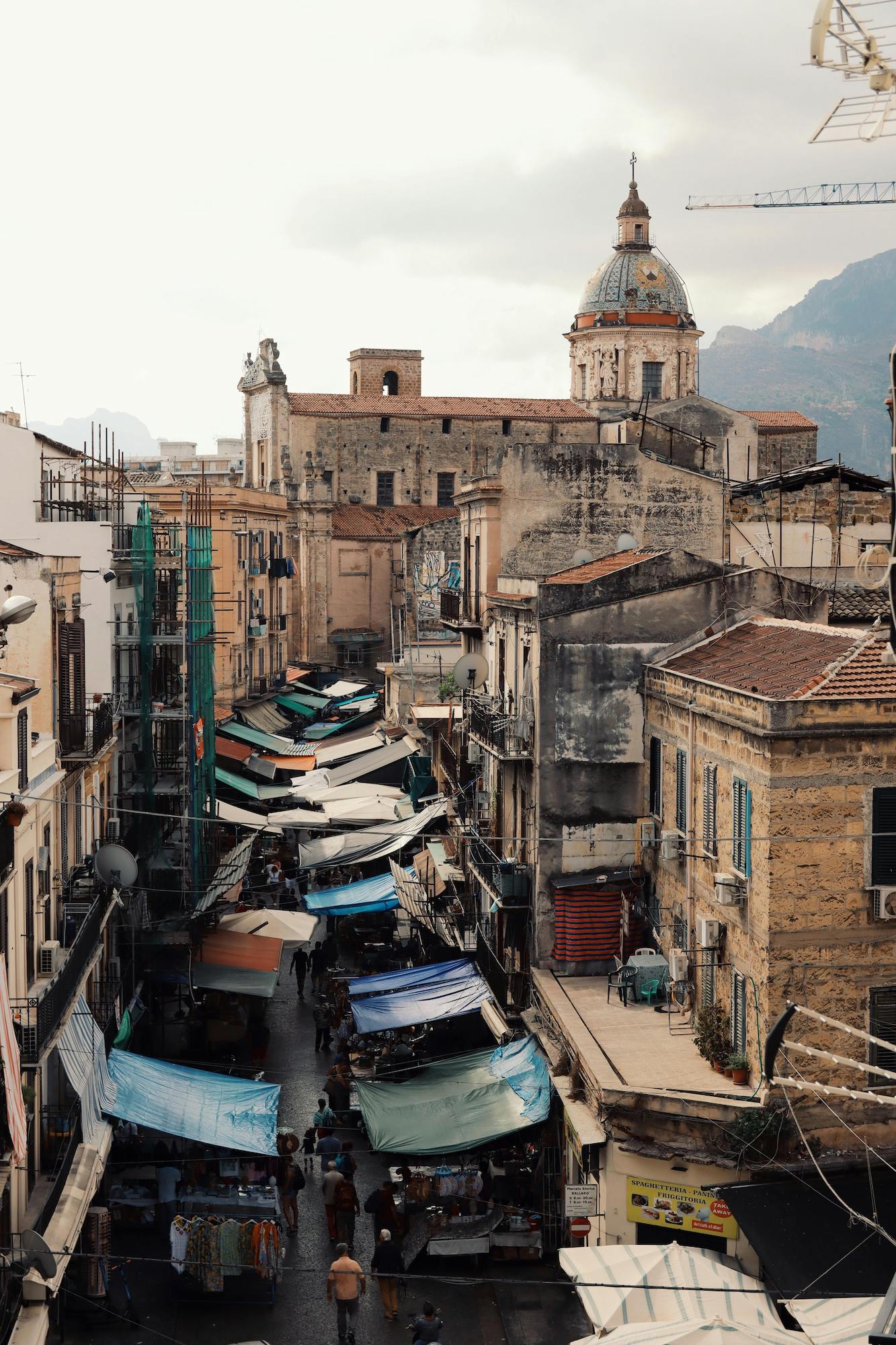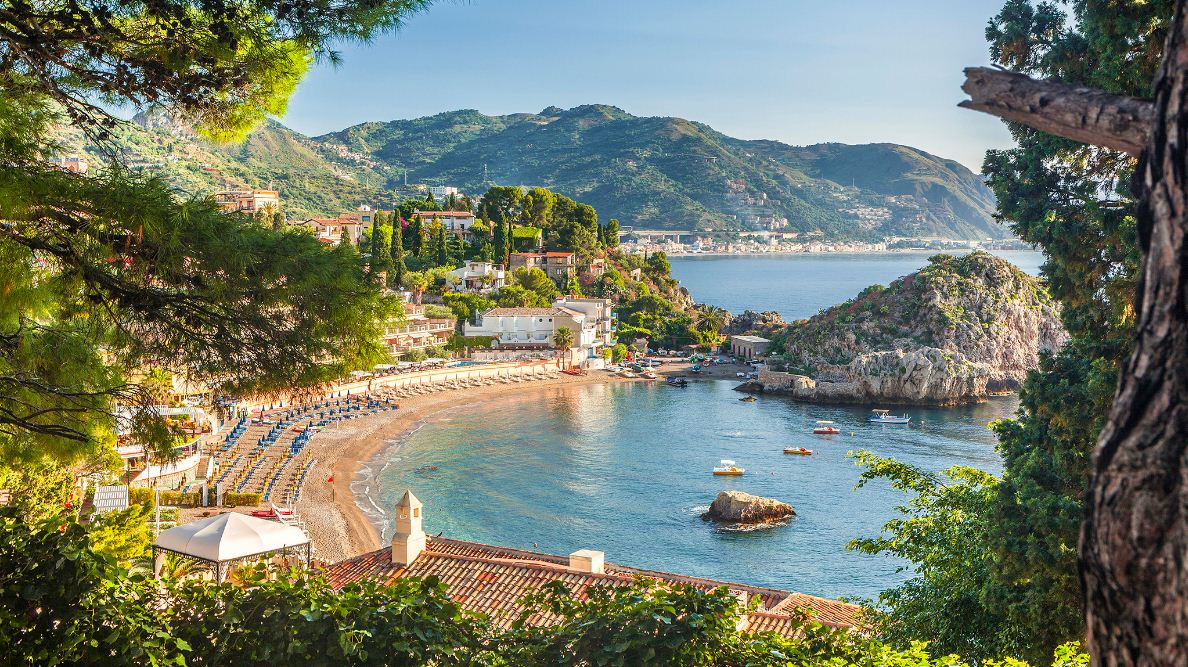
Summer in Sicily arrives not quietly but in a crescendo. The air grows heavy with the scent of lemons and wild herbs. Tomatoes swell and split on the vine, figs drip honey-sweet juice, and the Mediterranean sun gilds everything in an almost operatic light. For Sicilians, summer is a stage, and the market is where its most vivid scenes are performed.
Among the labyrinthine streets of Palermo, markets aren’t simply places to shop. They are the city’s heartbeat, ancient theaters of trade that have pulsed since Arab rule. Here, language rises in cadences as musical as opera, vendors cry out their daily offerings, and stalls are strung with pyramids of eggplants, peppers, and zucchini blossoms, each glistening as though painted by Caravaggio. For the summer traveler, these markets offer not just food, but a window into Sicily’s layered history and living culture.

The Cultural Significance of Sicilian Markets
Markets in Sicily are less about commerce and more about connection. In Palermo, they’ve existed for centuries, absorbing the island’s many influences: Arab traders brought spices, Spanish rule introduced chocolate and tomatoes, and Norman conquest left its architectural echoes in the stone arches above. The market stalls tell these stories still.
In summer, shopping at the market is an act of ritual. Families arrive early with baskets to collect the day’s produce before the sun scorches the cobblestones. Recipes are planned in real time, negotiated between what looks most vibrant and what grandmother insists is necessary for the evening’s meal. For visitors, stepping into Capo Market Palermo or the bustling lanes of Ballarò is stepping into this continuum—an experience as alive today as it was centuries ago.
Sicily’s Summer Pantry
The season dictates the menu, and in Sicily’s hot months, the bounty is both generous and intense. Some highlights include:
- Tomatoes: Bursting with sweetness, destined for caponata or tossed with olive oil, basil, and bread for a simple summer panzanella.
- Eggplant: The star of Sicilian cooking, fried into golden rounds, layered into pasta alla Norma, or folded into tangy caponata.
- Figs and Melons: Served chilled, their sweetness provides relief from the afternoon heat.
- Citrus: Lemons, limes, and blood oranges lend acidity to seafood and brighten sauces.
- Seafood: Swordfish and sardines dominate the summer table, often grilled over coals in open-air stalls and dressed simply with oil and lemon.
- Herbs: Wild fennel, oregano, and mint bring freshness to hearty dishes.
These ingredients are not chosen for trend, but because the land gives them at that moment. Sicilian cooking honors this cycle, allowing the ingredients to speak first.


Palermo’s Street Markets
Capo Market, Palermo
Among the most famous markets in Palermo Sicily, Capo is a riot of color and noise. Here, narrow lanes overflow with produce, cheeses, cured meats, and fried street food. Vendors shout over one another in Sicilian dialect, while the scent of panelle (chickpea fritters) and arancini wafts through the air. The summer traveler might snack on sfincione, Palermo’s thick, tomato-rich pizza, while weaving between stalls selling gleaming eggplants and buckets of sea urchins.
Ballarò Market
Ballarò, Palermo’s oldest market, stretches for blocks, its multicultural influences reflecting the city’s role as a Mediterranean crossroads. It is where African spices sit beside Sicilian cheeses, and grilled sardines are served next to couscous. In summer, the market spills into late-night gatherings, with street food and music blending into a carnival atmosphere.
Vucciria Market
Though smaller than in its heyday, Vucciria carries a symbolic weight in Palermo. Once the city’s primary market, today it’s known for its evening energy, when locals gather over grilled meats, seafood, and wine. In summer, its streets feel like a neighborhood festa.
Beyond Palermo: Markets Across Sicily
While Palermo’s markets dominate the conversation, summer markets in Catania, Siracusa, and Trapani also hum with life. In Catania, framed by Mount Etna, produce carries volcanic intensity—eggplants darker, tomatoes sweeter, fish fresher from the Ionian coast. Siracusa’s Ortigia Market dazzles with seafood, cheeses, and the scent of citrus carried on the breeze. These markets, like Palermo’s, blend utility with performance—evidence of a culture where food is inseparable from identity.
Sicily in Summer: More Than Markets
Though markets anchor the season, Sicily offers more summer delights. Evenings stretch long into passeggiate, or slow evening strolls through piazzas. Wineries open their cellars to tastings of Nero d’Avola and Grillo, their mineral tones shaped by Etna’s volcanic soil. The sea invites constant return, whether through swims off rocky coasts or long seafood lunches overlooking harbors. For travelers, summer in Sicily is a sensory immersion: cicadas singing in olive groves, the salt of the sea on skin, the cooling shock of granite al limone melting on the tongue.

Travel with Us: Food and Wine Tours of Sicily
At Modern Adventure, we believe the best way to understand Sicily is through its food. Our food and wine tours of Sicily include guided visits to Palermo’s street markets, intimate cooking sessions with local chefs, and private tastings of olive oil, cheese, and wine straight from the source. Whether wandering through Capo Market Palermo with a chef-host or sharing a family-style meal in a countryside villa, guests encounter Sicily as it truly is: generous, complex, and unforgettable.
To spend summer in Sicily is to live briefly as Sicilians do—guided by the market’s abundance, by the rhythm of heat and harvest, and by a devotion to food as the truest expression of culture. Palermo’s markets are not just stops on a tour; they are lessons in history, community, and the enduring joy of a meal shared.
Book your luxury travel in Sicily and let the flavors of summer guide you.




